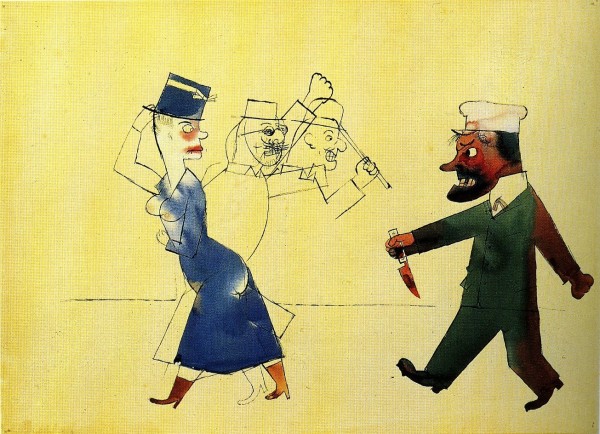Savage lines

From Prospect, George Grosz and the necessity of offence.
Grosz’s art is above all uncompromising, and he was content to keep producing it in the face of continuous prosecutions. Perhaps the absence of an idealised proletariat in his work – or anything idealised for that matter – can be explained by his artistic mode being an attacking rather than a sentimental one. Yet, it is difficult not to feel that there is more to Grosz’s portrayals of capitalist pigs at their various troughs than outright condemnation. His works bristle with colour, mischief and humour. Grosz’s fine reputation as a political satirist can invite the mistake of elevating him above his subject matter to a firm position of judgement. In reality, Grosz was intoxicated by this wreck of morals.
What is bad for society is often very good for the artist. Grosz must have understood this, since he not only found his impetus in moral outrage, but also built his style around a fixation with ugliness. This tension between aesthetic pleasure and moral agenda, between the practical joke and the chilling image, is the very lifeblood of Grosz’s art. In his autobiography, A Small Yes and a Big No, Grosz wrote of life in Berlin: “I was each one of the very characters I drew, the champagne-swilling glutton favoured by fate no less than the poor beggar standing with outstretched hands in the rain. I was split in two, just like society at large…” What he condemned as a man, he vicariously shared in as an artist. Perhaps it was the guilt of this collusion which drove him to such overt condemnation.
